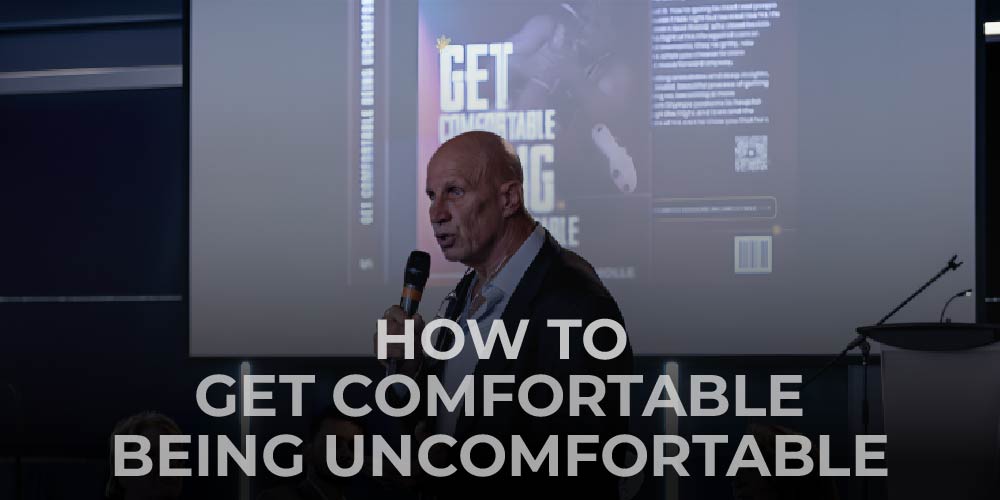Stepping outside of your comfort zone is difficult. It’s where progress and uncertainty meet, frequently leaving you feeling uncomfortable, uncertain, and awkward. But within this discomfort lies the magic of personal development, resilience, and a success mindset.
Getting comfortable being uncomfortable isn’t just a motivational quote of empowerment, it’s an evidence-based plan for peak performance and overcoming the toughest challenges. It’s championed by speakers and coaches, as well as the U.S. Navy SEAL training philosophy. But what does that look like applied to your day-to-day?
Why Embracing Discomfort Matters?
Comfort zones protect, but at the same time, they make things stagnant. Growth requires friction: the burn of physical training, the vulnerability of new experiences, or the fear of failure. Discomfort can significantly deter great opportunities and bar you from reaching your true potential.
Getting Comfortable with Being Uncomfortable by Bob Molle is a deep dive into how acceptance of discomfort can change your life. It’s more than just a saying; it is a conscious call to action that pushes beyond limitation and breaks from mediocrity.
But who said, “Get comfortable being uncomfortable“? Motivational speakers and thought leaders who understand the value of taking risks and embracing the unknown have echoed this mantra.
Steps How To Get Comfortable Being Uncomfortable
- Think Big, Start Small
Comfort zones are overcome one baby step at a time. Whether trying a new activity or having that difficult conversation, each little act builds your resilience.
- Shift Your Mindset
Consider discomfort a chance rather than a barrier. According to many of the top motivational speakers, suffering indicates that you are progressing rather than regressing.
- Practice Self-Awareness
Identify the situations that make you feel uneasy. Is it public speaking, initiating something new, or listening to different opinions?
- Surround Yourself with Support
Find people who challenge you and encourage growth. Coaching or attending workshops on Personal Growth may provide a safe space to practice stretching your limits.
- Build Emotional Resilience
Emotional intelligence can be the key to moving through discomfort. Mindfulness, journaling, or embracing vulnerability can make uncomfortable moments more manageable.
Benefits of Embracing Discomfort
Personal Growth:
Stretching beyond your limits enhances self-confidence and broadens your horizons.
Peak Performance:
Many successful athletes, entrepreneurs, and leaders grow by embracing discomfort, pushing the edges, and creating a mindset to succeed.
Stronger Relationships:
Getting comfortable with others’ opinions and learning to handle the awkwardness in social situations helps build empathy and rapport.
Professional Success:
Many motivational keynote speakers cite discomfort as their reason for innovation, inspiration, and effective leadership.
From Quote to Action
GCBU (Get comfortable being uncomfortable) is more than just a quote; it’s a roadmap for how to get spectacular results. This could be extended to stepping out of your comfort zone into Motivational Speaking, coaching, or even any area in overcoming challenges.
Final Thoughts
Getting comfortable with being uncomfortable doesn’t have anything to do with diving into fear recklessly; instead, it is about deliberate, gradual steps toward fulfillment and growth. Should you be ready to challenge yourself and embrace the uncomfortable, You’ll discover that some of the most incredible experiences occur while you’re managing that discomfort.
Check out how GCBU tackles the issues of comfort zones, coaching, and peak performance.


